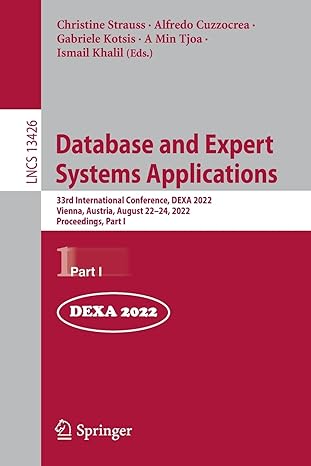Question
Let f1 = 1, f2 = 1, and fn = fn1 + fn2 for n > 2 (yes, fk is the kth fibbonacci number). A
Let f1 = 1, f2 = 1, and fn = fn1 + fn2 for n > 2 (yes, fk is the kth fibbonacci number). A student claims to have proven that the following statement is true for all real numbers c: n sigma fi = fn+2 c I=1 . They write the following: 1. Suppose n sigma i=1 fi = fn+2 c. 2. Then,n+1 sigma I=1 fi = n sigma i=1 fi +fn+1 =fn+2 c+fn+1 =fn+3 c. i=1 i=1 3. Therefore, if P(n) is what we are trying to prove, P(n) P(n + 1), so P(n) must be true for all n. This proof has a mistake, as the statement above is only true for one specific c. Explain why this proof is incorrect, find the constant c that makes this statement true, and fix the students proof to prove the true version of this statement.
Step by Step Solution
There are 3 Steps involved in it
Step: 1

Get Instant Access to Expert-Tailored Solutions
See step-by-step solutions with expert insights and AI powered tools for academic success
Step: 2

Step: 3

Ace Your Homework with AI
Get the answers you need in no time with our AI-driven, step-by-step assistance
Get Started


